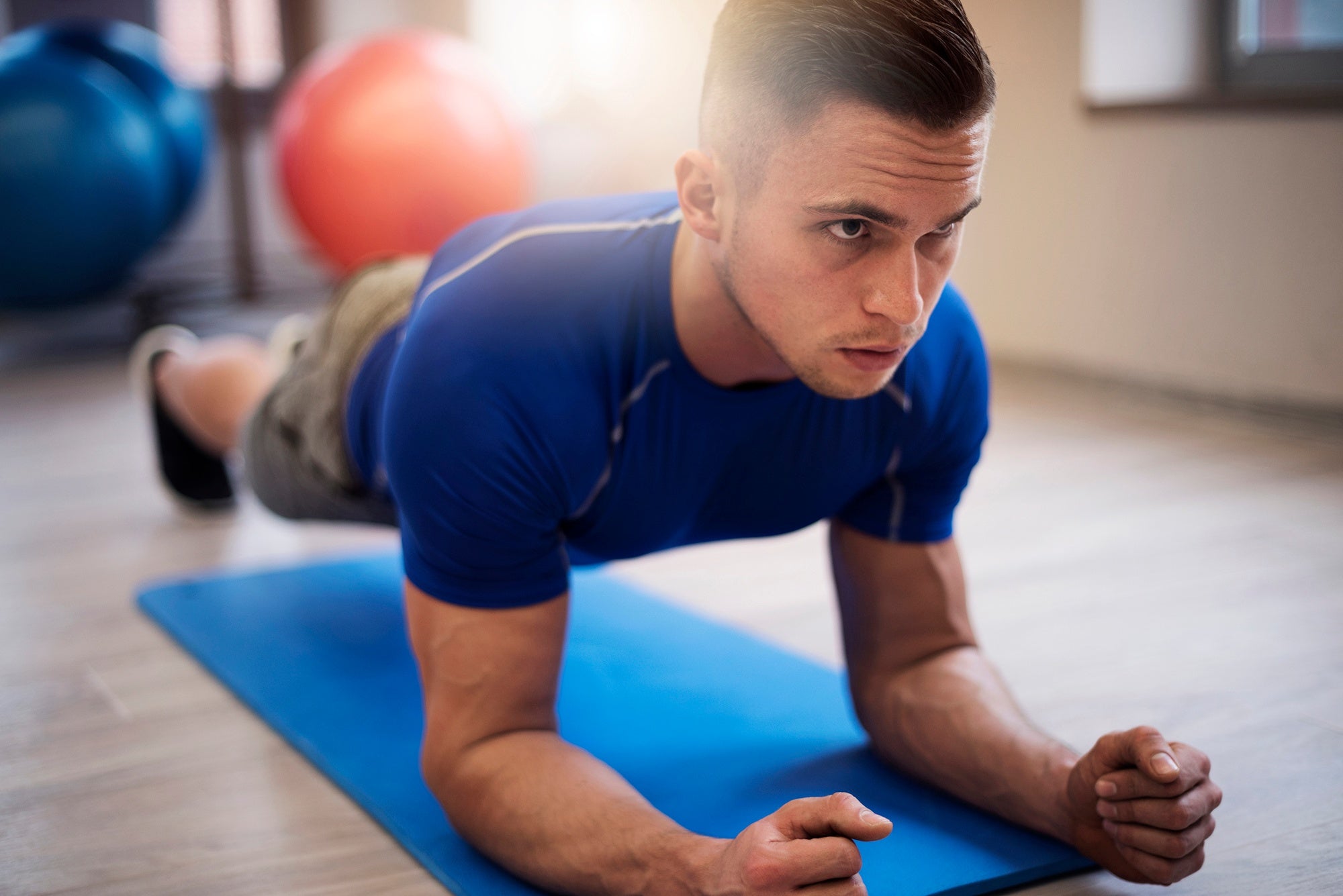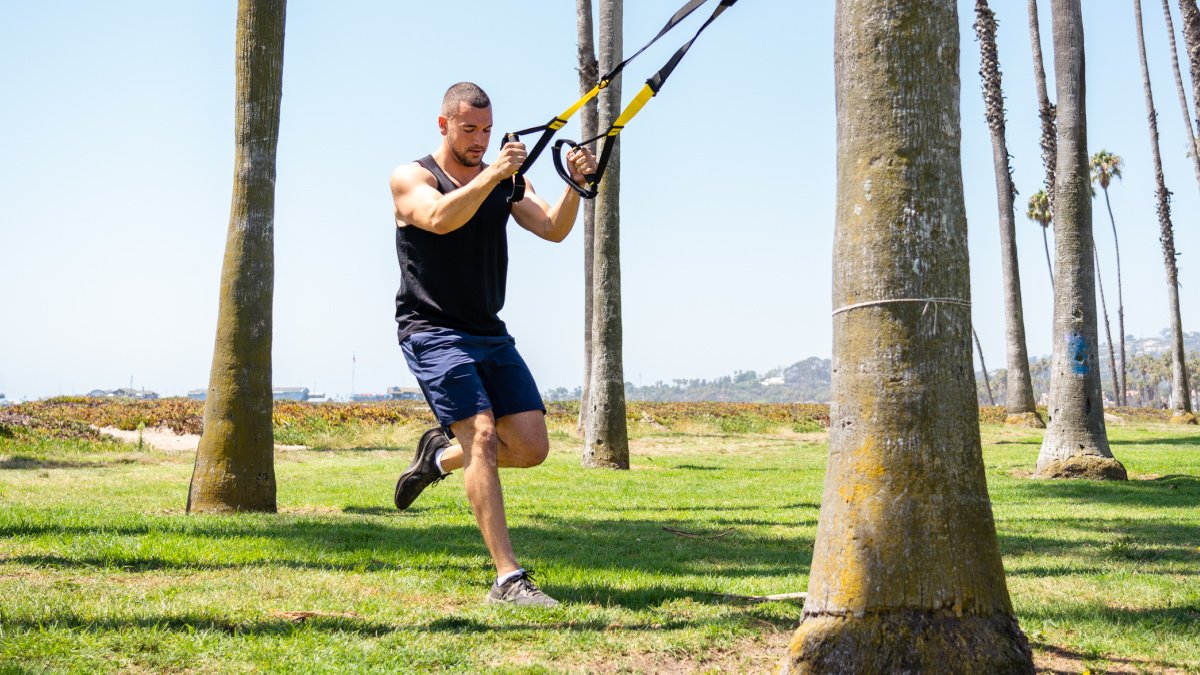Over the last few months, we’ve done a deep dive into what we term The Evolution of our TRX Foundational Movements (Plank, Pull, Hinge, Push, Lunge, Squat, and Rotate). Because “evolving” is an essential component to all movement goals, we felt that it was high-time that we provide all of you with an expansion on our standard movement vocabulary. The goal is to give you additional options for safely challenging your clients and students in their training.
If you’ve followed along—and we hope you have—you’ve already learned about the three new additions to the TRX Foundational Movements pyramid: Hinge to Bend (Part 1), which was followed by the Rotate to Twist (Part 2), and then the Lunge to Step (Part 3). If you are just now diving in, we recommend you go back and read the previous blogs in this series.
We conclude this series with the foundation of all movements, the all-powerful PLANK, and its progression to CRAWL. Want to find the perfect plank variation for your core strength level? Take our quick assessment quiz for personalized recommendations to help you master these fundamental moves.
TAKE OUR TRAINING QUIZ
PLANK 101
While typically seen as a static quadrupedal exercise—meaning that it’s performed on all fours (hands and toes or elbows and toes, for example)—the plank translates to all other exercises. From a squat to a low-row to a lunge, we emphasize an "active plank" to maintain proper levels of stiffness around the spine—“body like a surfboard”, a TRX Swing Thought we like to use to provide visual imagery to correct alignment of the body— ultimately improving strength and endurance in core muscles, which protects the spine and helps transfer forces through the body. Just like a house needs a strong, stable, intact foundation, the human movement system needs a stable foundation in order to move well and to avoid injury. The ability to create the proper level of stiffness in joints is important for everyone, from the newbie on day one to the 10-year vet on day 1,000. All in all, the active plank helps us achieve awareness of levels of stiffness and stability.
By now you know that this series has been all about changing the condition and so you can probably guess that we’re going to give the plank a bit of a shakeup by way of the crawl. In this final installment, we focus on this progression and mark it as the 11th movement in the TRX Foundational Movement pyramid, branching off as an evolution of skills and qualities acquired practicing the plank.
CRAWLING CONSIDERED
As a caveat, before we get into the nitty gritty of the crawl, it’s important to remember that not all movements are right for all people. Wrist, shoulder, or knee issues will likely warrant its proper introduction, or in some extreme cases, exclusion from a client’s program. It’s all about FLAC, which you learned about if you’ve gone through any of our TRX education courses. FLAC stands for FOCUS on the movement, LEARN the appropriate level of progression, APPLY the training load, and then CHALLENGE your limits. As a top-notch coach, you know that progression is earned and, in this case, you really must learn to plank before you can crawl.
Caveat done!
LET’S GET CRAWLING!
Some of you may be asking: “But wait, when I crawl I can’t maintain my strict, stiff, active plank!” Yes, that’s true. When we are moving on all fours, the pelvis, spine, and shoulder girdle will necessarily demonstrate supple motion, like you see in other animals walking on all fours. You learned the active plank to remind you, or reprogram your movement software, to create local stiffness around your axial skeleton. Crawling encourages dynamic stabilization, appropriate segmental movement of the spine, proper glenohumeral and lumbopelvic rhythm to use what Gracovetsky termed “the spinal engine” in the late 1980’s. This is one reason why we consider crawling as an evolution of active planking.
WHY CRAWL?
The crawl is essentially a moving plank that is typically performed on the hands and toes/balls of feet. It’s a full-body coordinated movement that, when performed properly, trains mobility, stability, and even conditioning all at once. It functionally strengthens the core and improves upper and lower body coordination since your shoulders and hips must work together in a coordinated and reflexive way.
The crawl also features primal movement patterns, but because most of our daily lives have removed us from our early grounding exploration and playing, it also requires significant cognitive attention to be acquired, practiced, and performed well. This practice can lead to improved proprioception, aka your perception of where torso and limbs you are in space. As you improve your mobility you create better information input (or afferent pathways to your nervous system). The more afferent information your nervous system has related to joint positions, weight bearing, pressure, and force distribution the better outgoing, or efferent, movement options can be performed. Because crawling involves your feet, toes, hands, and fingers, all which are full of sensory receptors, we refer to this as a proprioceptively rich environment. The more you can improve or maintain proprioception the better you will be at recognizing and adapting to your environment and moving efficiently. Effective human movement is a nuanced interplay of appropriate levels of stiffness, suppleness, contractions, and graduated relaxations timed just right. Bottom line is, crawling can enhance your ability to hone some of these nuanced qualities.
MYRIAD TRAINING OPTIONS
Like most exercises, the crawl can be regressed and progressed based on the needs of your client or student. Bodyweight is not only a great place to start, but can provide more than enough opportunity for modifications - ie. baby crawl, bear crawl, crab walk, gorilla scoot, lateral and reverse variations. You might challenge your higher-level athletes to move quickly in various directions, such as dragging a TRX Power Bag as they crawl, or adding load such as a weighted vest. Inexperienced crawlers might start on hands and knees, six-point crawling (as opposed to toes) with slow forward movements—or a simple back-and-forth pattern without changing limb placement—to work on carefully interacting with the ground and avoiding excess side-to-side weight shift.
The crawl isn’t just child’s play. It really is an all-in-one exercise that offers a multitude of opportunities to enhance physical function, create a more diverse and interesting training program, build a better mind-body connection, and so much more.
THAT’S A WRAP!
And there you have it! You’ve successfully completed our four-part series on the Evolution of the TRX Foundational Movements.
In Part 1, hinge progressed to the bend, expanding our exercise library in the mind body space (yoga, pilates). In Part 2, we added dissociation of the upper and lower body as we evolved from rotate to twist. And in Part 3, we discussed the lunge, which is a deceleration tool, led to the acceleration-based step. And we finished off by adding locomotion to the plank with the crawl.
FINAL THOUGHTS
We know that this is a lot of information to absorb and so we recommend taking your time to study and practice each of the four new movements before introducing them into your client sessions or classes. Once your athletes demonstrate lunge mastery, it might be time to test out the step. Can they maintain a surfboard body while planking? If so, then change the challenge and get them crawling. You can then further enhance each movement by “changing the conditions” with our functional training tools. Doing so will help you create and integrate some additionally challenges.
We hope you’ve enjoyed taking this journey with us. Please keep in touch and let us know how these movements have impacted you and your clients. And, of course, we look forward to seeing you at one of our upcoming educational courses soon!



